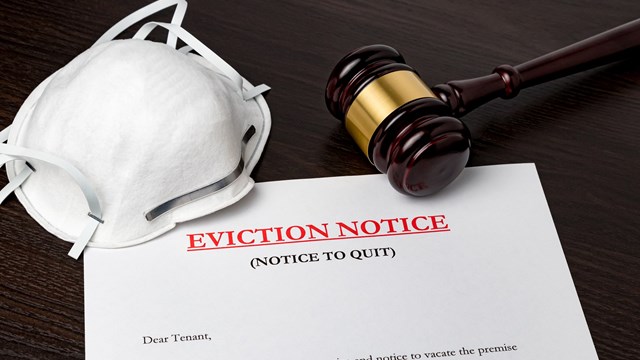In these tumultuous times of uncertainty and financial instability, one thing is certain: crime rates rise as the employment rate and markets fall. However, there is much you can do to create safe, secure, and happy communities. Common sense, best practices, and new technology can go far in insuring both the real safety of your residents and their perception of how safe they are.
It Takes a Village (or at least a few neighbors)
It may be surprising that the most effective crime-prevention measures are the least expensive but pay the greatest dividends. There is simply no substitute for caring neighbors who watch out for each other and pay attention to who is coming and going. In communities where the common areas are well-utilized and maintained, residents simply have a better sense of who is a resident or guest and who is a stranger. While you can’t really train people to care, you can train caring people.
One such program is the Crime-Fee Condominium Program detailed at the Crime Free Association website (www.crime-free-association.org). The Crime Free Association is a non-profit organization supporting residents, property managers, and renters who want to fight back against crime. The program detailed in their literature requires special training, background checks on tenants, communication with the local police department, posting of signs and certificates, and other measures. A key element of the program includes the Crime-Free Lease Addendum. This addition to the standard rental or lease agreement was developed by the federal government’s Housing and Urban Development (HUD) department and upheld by the Supreme Court. As described by Sgt. John Nebl of the Schaumberg Police Department in Illinois, and a consultant to the Crime Free Association, the lease addendum stipulates that any criminal activity by residents, guests of residents, or subtenants is in violation of the lease and may be grounds for eviction. This is important, Sgt. Nebl points out, because while the standardlease agreement covers the usual grounds for eviction (failure to pay rent, vandalism, etc.), it does not count criminal activity as a violation of the lease agreement.
While these measures may require significant time investment and community building, the financial outlay is much less than the potentially thousands of dollars needed to invest in the technology discussed later in this article.
A Clean, Well-Lighted Place
Clean, well-lit, and properly maintained lobbies, recreation rooms, parking lots and walkways help prevent unwanted activity, or as Nebl describes it, make “the physical property less inviting to criminals and criminal activity.” According to Nebl, Crime Prevention Through Environmental Design (CPTED) is an important element of the Crime-Free Program. The standards included in CPTED include bright but even lighting both inside and out; deadbolts with three inch screws on doors; peepholes; anti-lift, anti-slide patio features on doors and ground story windows; and proper landscaping.
As Christopher McGoey, an internationally-known security consultant, of Murrieta, California.-based McGoey Security Consulting, points out, getting the lighting right is a great place to start: “good common area lighting with automatic light sensors turning them on from dusk to dawn is the best money spent on security. Good illumination reduces crime and the fear of crime among residents.” Nebl additionally recommends that care be taken to create even lighting both inside and out. Lights that are too bright in one area may create glare andshadows that actually limit visibility.
Because security measures like deadbolts, peepholes, and anti-lift, anti-slide features are obvious next steps or are built into the units from the start, sometimes the outside landscaping gets overlooked. Bushes should be trimmed away from lower floor windows or away from parking lots. Nebl describes “3-6 Rule” where bushes near windows are kept no higher than three feet (3’) and overhanging trees hang no lower than six feet (6’). Walkways can be lit with solar-powered lights to increase safety and convenience without increasing electrical usage. Dumpsters, unused building materials, non-workingcars, and other places intruders can hide should be addressed as well.
With a Little Help from Your Friends
Sometimes though, the presence of a paid security professional on the grounds can help deter even the most dedicated criminal. Whether called a “security guard” or a “courtesy professional,” the role is the same: to help deter crime by maintaining an active presence on the property. If the propertyis small, manning a desk in a central location may be enough to project that attentive presence. With larger properties, patrols become important, especially during the dark, overnight hours. The route, frequency, and reporting of these patrols should be clearly stated in the security contract, and the staff should be held accountable for fulfilling this responsibility. Exactly what a security guard is supposed to do is laid out in the “post orders” (detailed written instructions and protocols).
While many property managers prefer to hire and train their own staff, some turn to professional security companies that may also include alarms, video surveillance, and remote monitoring. As with any contractor hired to do work on the premises, some research must be done to insure the highest quality work. Marshall Marinace, president of Marshall Alarm Systems in Yorktown Heights, New York, and vice-president of the National Burglar and Fire Alarm Association (NBFAA), suggests that condo boards or property managers only hire licensed, fully-insured security companies. It is also important to take a close look at security contracts to insure they meet the needs of the community. For example, how often are patrols? Is there redundancy in the alarm and monitoring systems in the case of power outages or phone lines going down? What about system integration (where fire, monitoring, and crime systems are all integrated and monitored together)? Are there







Leave a Comment